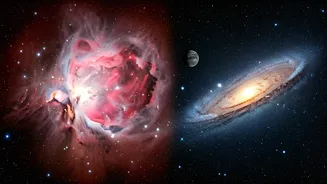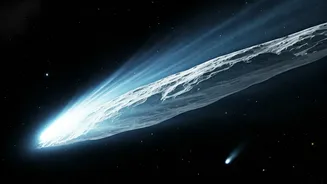What Are White Dwarfs?
White dwarfs represent the final, quiescent stage in the life cycle of many stars, especially those with masses similar to our Sun. After a star exhausts
its nuclear fuel, it can no longer generate the outward pressure that counteracts gravity. As a consequence, the star collapses, eventually shrinking to a fraction of its original size. The core becomes incredibly dense, packed with matter, primarily in the form of electrons and ions. This compact state prevents further collapse. These dense, hot objects gradually cool and fade over billions of years, radiating their remaining energy into space. Understanding white dwarfs provides valuable insights into stellar evolution and the ultimate fate of solar systems. They present unique opportunities for astronomical observations.
Planetary Interactions Explained
White dwarfs are often found to have interactions with planets. When a white dwarf forms, any planets that were orbiting the original star may be drawn towards it, or get caught in its gravity. Planets can get torn apart by these strong forces. Astronomers have observed that white dwarfs are sometimes surrounded by debris disks, likely the remnants of disrupted asteroids or planets. These observations suggest that white dwarfs can still affect their surrounding environment. These stellar remnants can also cause some unusual phenomena. One example includes the formation of hypervelocity white dwarfs, that are ejected from their stellar systems at incredible speeds.
Seeking Habitable Worlds?
Scientists are actively exploring the possibility of habitable zones around white dwarfs, where liquid water – a crucial ingredient for life as we know it – might exist on a planet's surface. White dwarfs emit less energy than their main-sequence counterparts, meaning the habitable zone would be much closer to the star. Therefore, planets that can sustain liquid water could exist. The search for habitable planets around white dwarfs has already begun with astronomers using advanced telescopes. While the harsh conditions and the late-stage stellar environment around white dwarfs present significant challenges for the formation and survival of life, these systems offer a unique opportunity to study the potential for life in extreme environments.
Current Research and Findings
Ongoing research into white dwarfs is advancing our understanding of their properties and behavior. Astronomers are using advanced telescopes and sophisticated analytical techniques to study these objects. They are particularly interested in the composition of white dwarfs, and how these compositions change over time. The study of white dwarfs can provide key insights into stellar evolution and the lifecycle of stars. New discoveries are constantly being made, revealing the unique characteristics of these stellar remnants. The future of white dwarf research promises to unveil even more of their secrets, leading to a deeper understanding of stellar processes.














